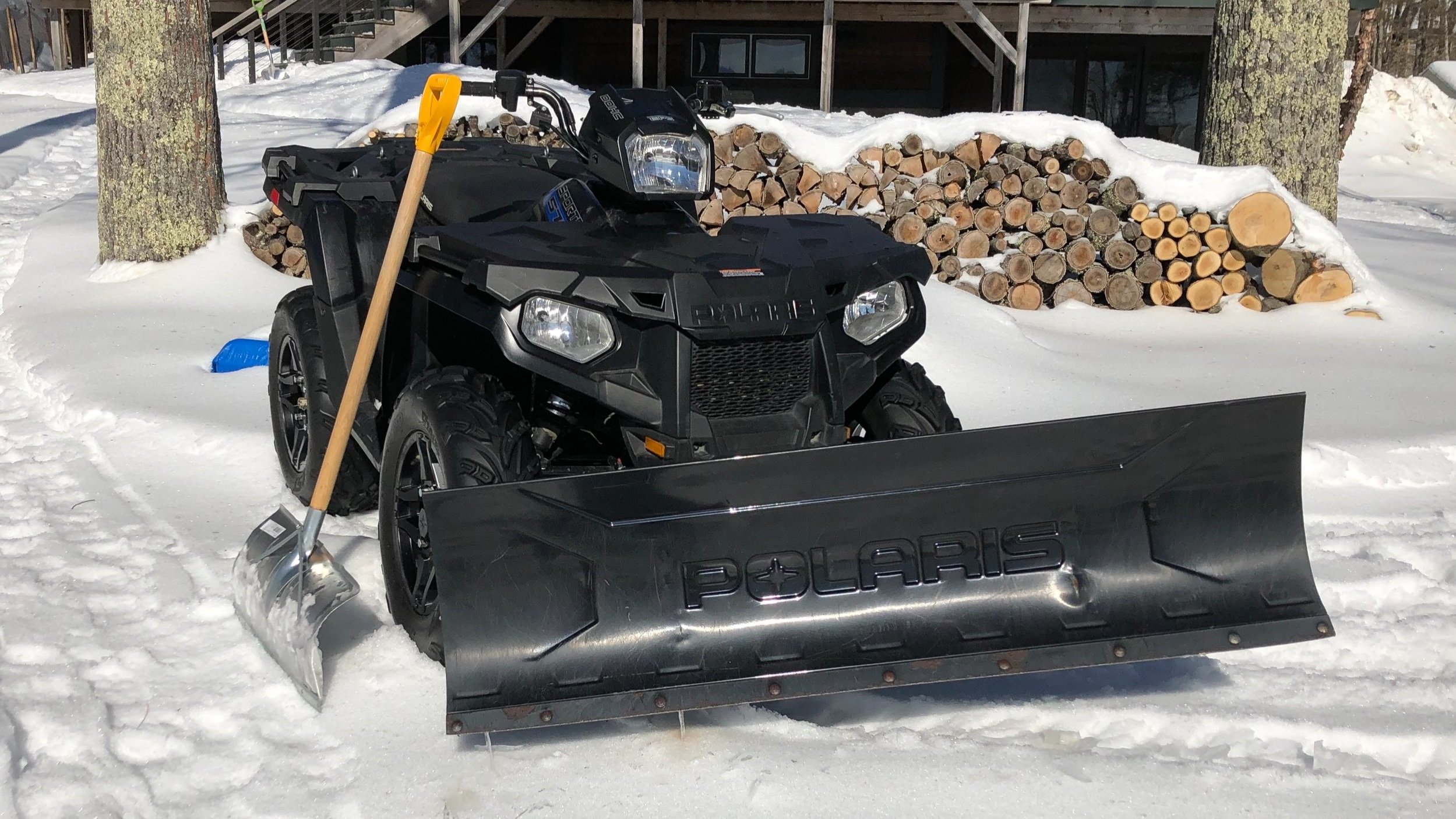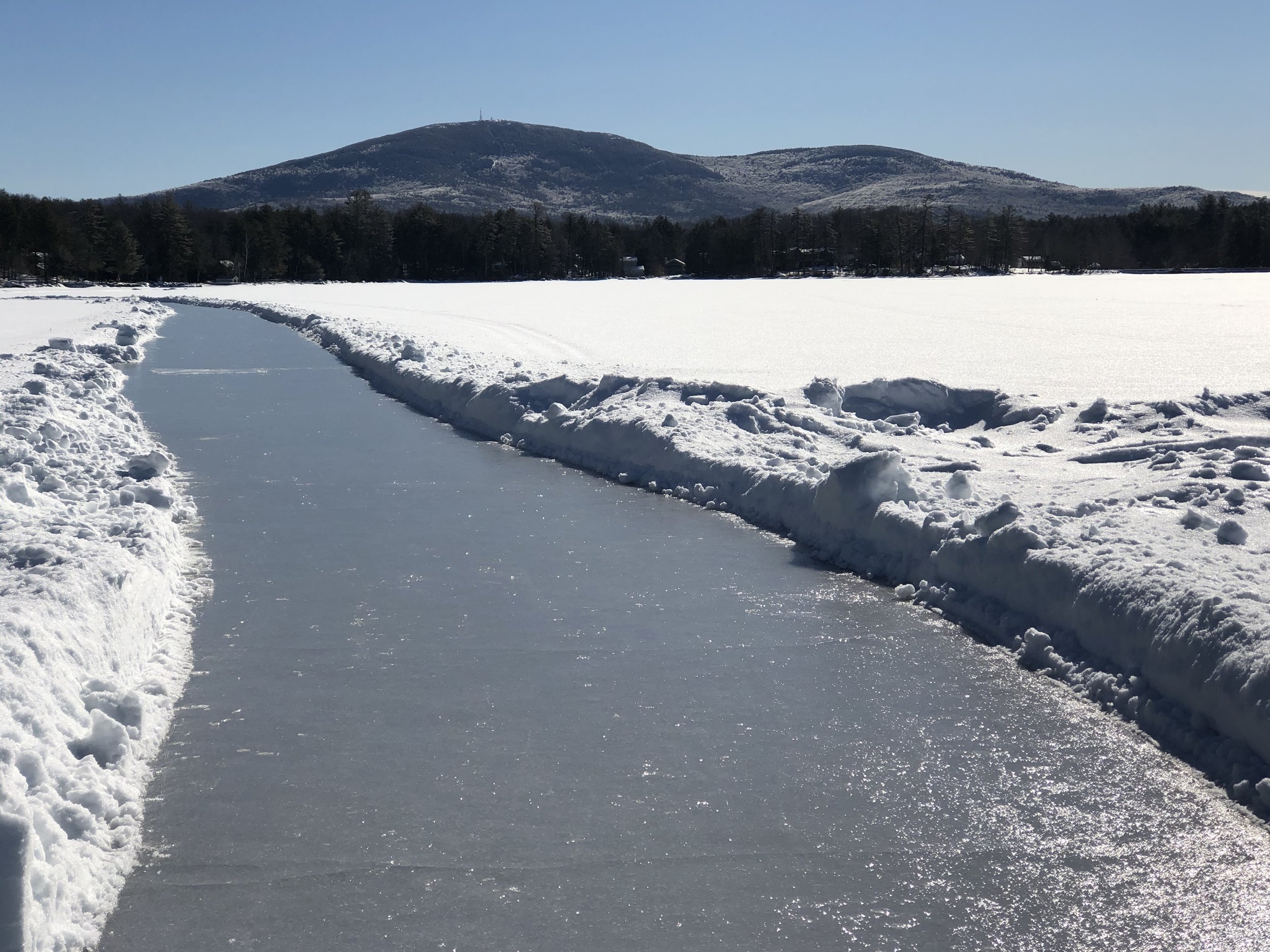Machine-Groomed Ice
When smooth wild ice becomes buried under a blanket of snow, there’s only one thing to do: Get out and plow a skating trail. The ‘godfather’ of New England skating trails is on Lake Morey in Fairlee, Vermont, where the first groomed skating loop was created in 2001. When the trail is fully open it’s 4 miles long, making it the longest in the nation. But the tradition of machine-groomed skating trails goes back generations in places like Canada, Norway, Sweden, Finland, the Netherlands and Austria.
Trail Layout
Choosing a good trail layout is key to minimizing maintenance. First of all, the trail should be far enough away from shore to avoid dock bubblers, as well as sources of oozing slush, which tend to be clustered along the shoreline. Slush can creep out onto the trail from underneath snowbanks, turning smooth ice into bumpy ice, so the wider you can make your trail, the less susceptible it will be to a slush invasion. Then there’s the wind, which can destroy your trail by filling it up with drifting snow. A location that’s 100% protected from the wind would be ideal. Failing that, lay out your trail parallel to the prevailing wind direction - NOT perpendicular to it. If the wind blows straight down your trail, it will scour the surface, polish it and keep it free of snow. But if the wind blows across your trail, drifting snow will accumulate and pack down into cement, requiring daily or even twice-daily maintenance.
The most versatile rig for grooming ice is an ATV with plow (see photo). It’s much quicker than a snowblower, and thanks to its light weight you can get out on early-season ice that’s still too thin for a side-by-side (UTV), a truck or a tractor.
When To Plow
The key element is timing. If you’re expecting more than 8 inches of snow, plow in the middle of the storm so the snow doesn’t become too heavy to move. Otherwise, if the storm is all snow, plow as soon as it stops snowing and while the air temperature is still below freezing. Plowing at faster speeds (10-20mph) deposits the snow further from the edge of the trail and minimizes snowbanks. You’ll find that snowbanks are your nemesis because (1) the weight of the piled-up snow can sink your trail underwater and (2) snowbanks tend to become cemented in place and if it snows repeatedly your trail will just get narrower and narrower.
As the climate warms, winter storms are increasingly becoming a mix of rain, snow and sleet that turns to slush as soon as it lands on the ice, while temperatures seesaw around 32 degrees. The best time to plow is when temperatures are well above freezing, or immediately before rain is forecast. Rain and warm temps are ‘Nature’s Zamboni’ and they will smooth out the ice. Conversely, the worst time to plow is right when the temperature is dropping below freezing; your tire tracks will become embedded in the ice surface, and any bits of slush you leave behind will freeze into blocks of solid ice, creating tripping hazards.
When plowing slush, you must plow while the air temperature is above freezing. Plowing slush in below-freezing temps will result in a bumpy or unskateable surface. Before starting to plow, make sure you don’t have to deal with a layer of slush creeping across the ice underneath the snow. If slush is present, wait until the temperature is above freezing, or hold off plowing altogether.
Lastly, precipitation that’s mostly or entirely sleet (ice pellets) cannot be successfully plowed. It’s better to just leave the sleet where it is and hope it freezes into a smooth skating surface. Chances are pretty good that it will.
Photo above shows a Polaris ATV (‘four-wheeler’) with a front-mounted plow. This is a good low-budget rig for grooming a skating trail up to 3 miles long and 10 feet wide. If you want to go longer, or wider, you’ll need a bigger rig, and ideally a snowblower attachment instead of a plow blade.
Leaning against the ATV is a ‘snow-pusher’ shovel. After plowing, you can put your skates on, grab the shovel and use it to scrape off any bits of snow that were left behind by the plow.
Photos below and below left were taken on the mile-long machine-groomed skating trails maintained with an ATV on Pleasant Lake in Elkins, NH; and with a UTV on Mascoma Lake in Enfield, NH. An ATV can operate on 4 inches of black ice, while a UTV requires 6 inches due to its extra weight.
Lake Morey is professionally maintained using a tractor with an attached snowblower and rotating brush. This rig is capable of crating a wider trail with smoother and cleaner ice, but it requires at least 8 inches of black ice for safe operation.




